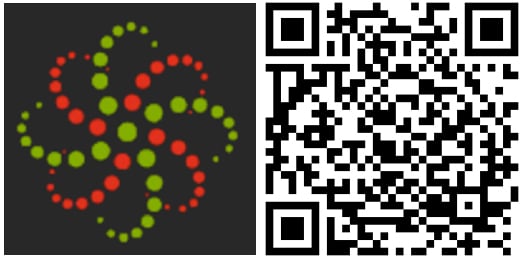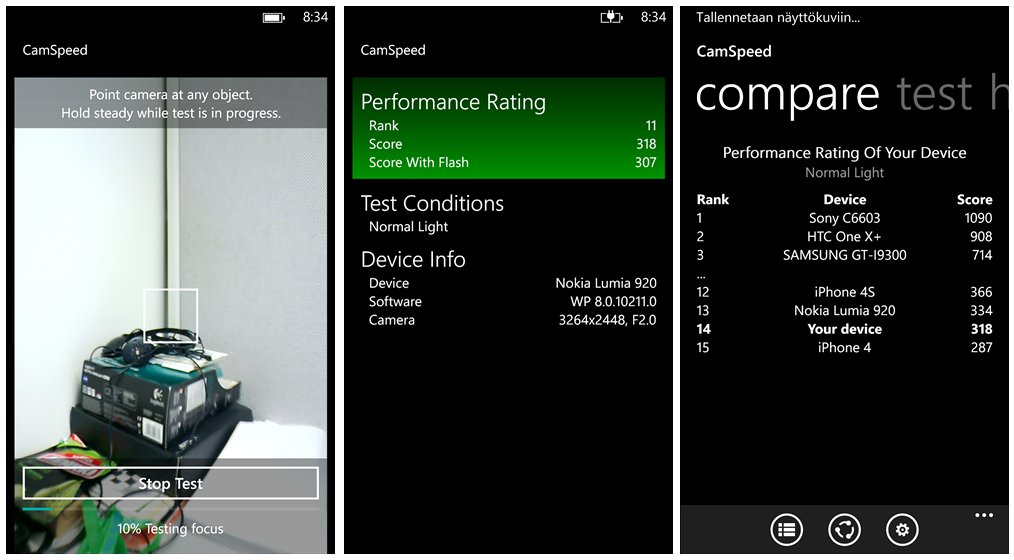Camspeed, benchmarking your Windows Phone 8 camera

Ever wonder how fast your Windows Phone 8 camera is? CamSpeed is a Windows Phone app that will put your Windows Phone 8 camera through a battery of tests and tell you just that. CamSpeed also taps into the Sofica benchmarking database not only to publish your results but also to pull numbers from other devices for comparison. CamSpeed doesn't test your camera's image quality but rather the speed it launches, focuses, and captures images.
CamSpeed will maintain a history of your tests and let you share your results on Twitter. CamSpeed isn't going to appeal to everyone but if you're looking for a simple way to test your camera's speed, CamSpeed should fit the bill.
The user interface for CamSpeed is fairly simple. You have a Test Page to start the camera test, a History Page to view your testing history, and a Compare Page to show how your camera measures up.
To test your Windows Phone 8 camera just hold it steady, focusing on one point and tap the test button. CamSpeed will test the speed of opening the camera, focusing, capture speed with and without the flash, and closing the camera. The test takes just a few seconds and when all is said and done you'll get a test summary report that shows your ranking, score with/without a flash, test conditions, and camera information.
The test will be added to your History Page and reflected on the Compare Page based on the lighting conditions. There is a "Compare On" button that will pull up all the benchmark tests that can be switched from low, normal and bright light test results. Again, CamSpeed does not grade the cameras on image quality.
We had interesting results in testing CamSpeed with the Nokia Lumia 920 and HTC 8X. Speed wise, the 8X performed better than the 920. Low light testing had the 8X scoring a 346 while the Lumia 920 scored a 255. Normal lighting the Lumia 920 scored a 320 while the 8X scored a 485. Unfortunately it was a rainy, overcast day so the bright light test was not possible.
How does that compare to other devices? Normal light tests show the Sony C6603 tops with a score of 1090. The LG Nexus 4 takes the top spot in low light tests with a score of 852.
All the latest news, reviews, and guides for Windows and Xbox diehards.
Again, CamSpeed isn't going to appeal to everyone but if you're curious how your camera performs speed wise it's worth checking out. CamSpeed is a free app for your Windows 8 device and you can find it here in the Windows Phone Store.


George is a former Reviews Editor at Windows Central, concentrating on Windows 10 PC and Mobile apps. He's been a supporter of the platform since the days of Windows CE and uses his current Windows 10 Mobile phone daily to keep up with life and enjoy a game during downtime.

